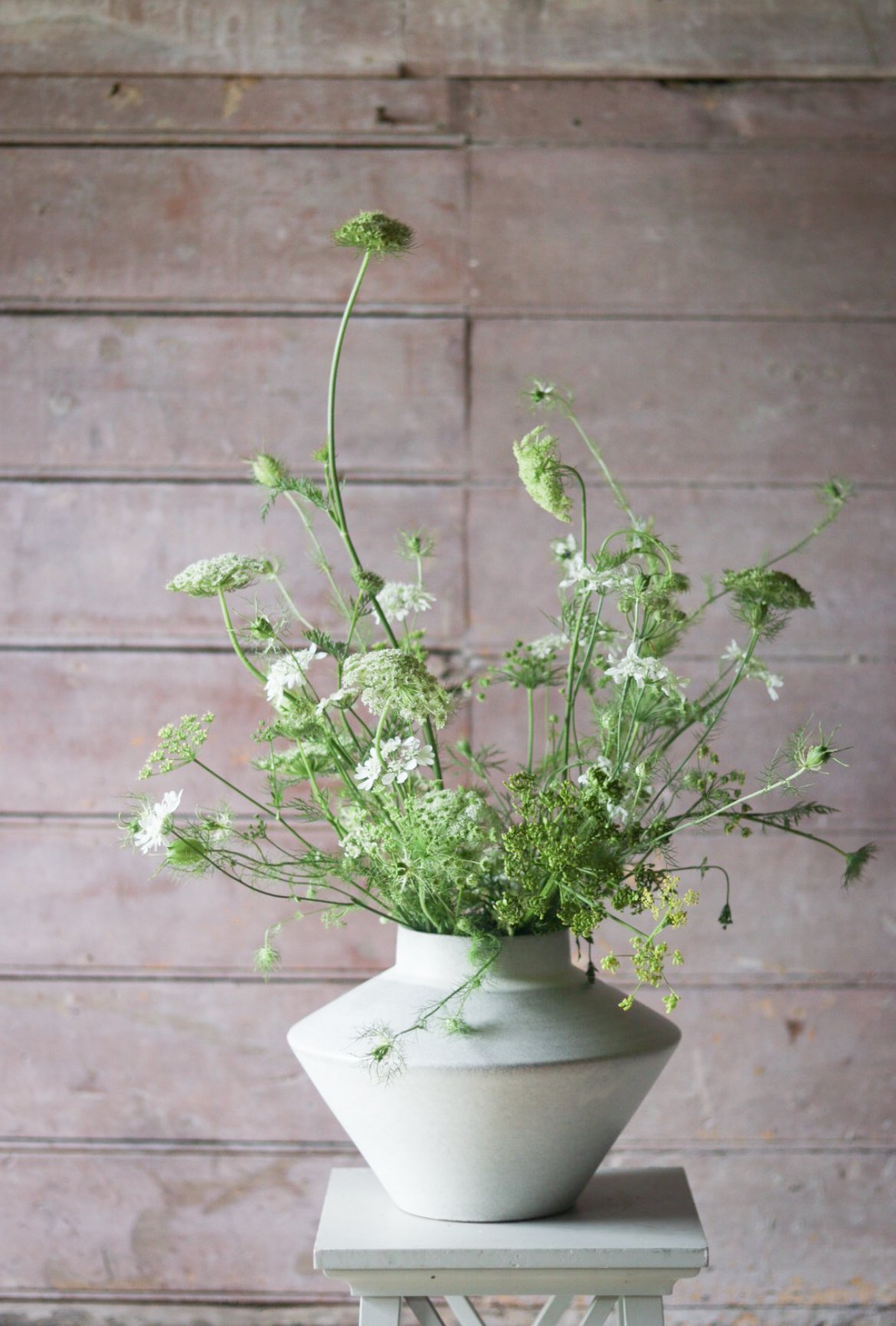Flowers for floristry and perceived value
In traditional floristry, floral designs tend to be broken down into focal flowers, filler flowers, gestural flowers and foliage.
A lot of importance is typically placed on the ‘focal flower’, which is normally the larger flower variety that draws the eye in an arrangement. In most traditional designs there would be 3-5 of these focal flowers, and they are more costly per stem than smaller flowered fillers or gestural flowers.
Only, this year’s Summer Season of the Season Led Florist Programme hit that sweet spot in June when the roses are in full flower, but other than that there aren’t really any ‘focal’ flowers growing.
So how do you create floral designs - especially gift bouquets intended for vase life longevity - when there aren’t any focal flowers? (In our experience, garden roses are event flowers and don’t recommend them for gift bouquets, as they don’t perform as well in the vase for more than a couple of days.)
Which leads us into the bigger questions of ‘what flowers constitute floristry?’ and ‘how do you determine what a floral design is worth?’
Determining the value of floral designs
How do you determine the price of a floral design? Is it based on the value of the inputs? ie the cost of the flower + the hours? Does a floral arrangement ‘have’ to have focal flowers in it for our customers to perceive that the arrangement is ‘worth’ a certain price?
What if the flowers were self seeded / from the hedgerows and you didn’t ‘pay’ for them? Is the value of the arrangement lower?
Design created by Willow Bridge Designs during a workshop
What if you are such an experienced florist that your arranging is quicker than a relatively new florist? Are your arrangements cheaper?
Consider the design to the right. How much is this arrangement worth?
Is it just worth the hours it took to create because it’s made with bolted carrot flowers from the vegetable patch?
We have a very strong opinion that these flowers still have a ‘cost’ even if you didn’t ‘pay” for them in the form of opportunity cost, time spent cutting and conditioning, years of experience in building relationships to be able to forage from private land with permission (otherwise it’s illegal), and knowing what you can and can’t cut, how to forage responsibly…
Then you need to consider the vessel used, the preparation of the ‘hardware’ and the flowers themselves, time spent arranging, the value of the ‘design’. What about VAT?
It took us years to give ourselves permission to work with ‘unconventional’ ingredients and to confidently design without resorting to more cultivated flowers in an attempt ensure a ‘perceived value’.
If we want to move our floral industry towards a more sustainable footing, challenging preconceived notions of what constitutes flowers for floristry is essential. And so is understanding how to communicate - and price - that to our clients…
Which is why we spend so much time exploring this with our students. And which is why the topic of our next Business of Floristry zoom call is pricing.
Sustainable floristry is so much more than just switching to sustainable mechanics. And yes, it is more challenging to educate and change our customers’ expectations of flowers. But isn’t it also more rewarding?! Plus, the flowers, in our opinion, are far better…

